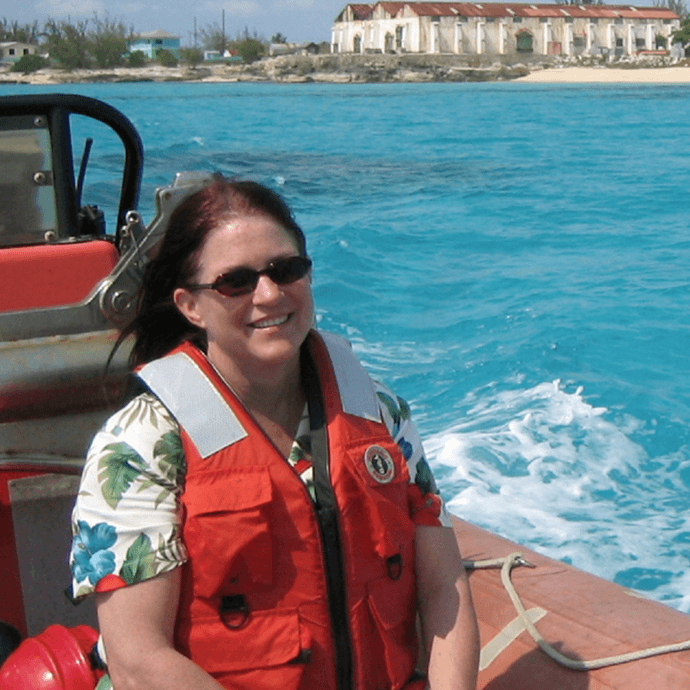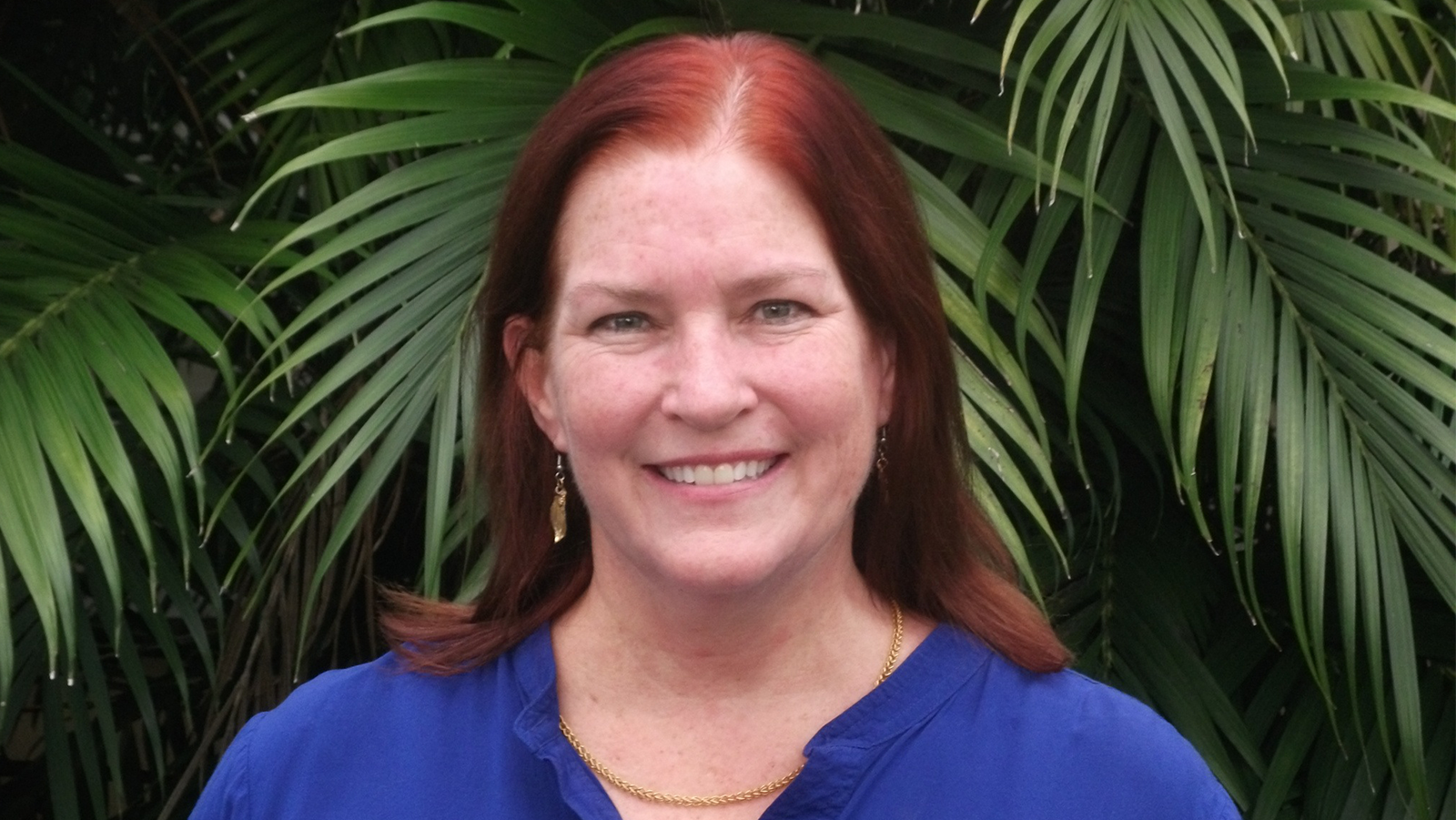Originally published at NOAA Research on June 28th, 2022.
After 36 years of federal service as a physical oceanographer, we celebrate the career of Elizabeth “Libby” Johns as she retires from NOAA’s Atlantic Oceanographic and Meteorological Laboratory (AOML). Libby began her career at NOAA in 1986 when she accepted a position at AOML as an Oceanographer.
Libby’s early research focused on physical oceanography studies of western boundary currents in the North Atlantic. Her interests evolved to include interdisciplinary studies of the variability of south Florida coastal waters, fisheries-related studies in the Caribbean and Gulf of Mexico, and finally applied studies of the causes and effects of unusual oceanographic events. Some examples of these unusual oceanographic events are far-reaching Mississippi River plumes, a “green water” event in the eastern Caribbean Sea triggered by the arrival of a North Brazil Current ring, and most recently the mysterious arrival of the pelagic golden seaweed known as “Sargassum” into the tropical Atlantic and Caribbean Sea in 2011.

Libby’s career path was quite unusual in that she majored in English literature as an undergraduate, and only began thinking of oceanography as a potential career after she graduated. She pursued an advanced degree in marine science after college and earned a Ph.D. in Oceanography from the University of Rhode Island in 1984, where her research focused on Gulf Stream dynamics.
“Once I chose a graduate school and was accepted into the oceanography program, I knew that I had found my professional calling,” said Libby.
After graduating, she did an 18-month post-doc at the Cooperative Institute for Marine and Atmospheric Studies (CIMAS) at the University of Miami, where she began working closely with scientists from AOML. Following her post-doc, she accepted a full-time position with NOAA AOML as a physical oceanographer. During Libby’s time at AOML, she was a part of numerous research cruises on ships ranging from smaller research-equipped shallow water boats to the large NOAA Ships Malcom Baldrige, Gordon Gunter, and Ron Brown. She authored or co-authored 38 publications, and received three awards for her work. Her research played a critical role in showcasing the importance of physical oceanography in solving biological, chemical, and ecological marine mysteries.
Q&A with Libby Johns:
What drew you to the field of oceanography?
I always found the ocean to be fascinating, but I imagined that if I made a career of oceanography it would be as a marine biologist or chemist. However, when I began graduate school I found that physical oceanography was a new and rapidly growing field that really caught my interest. Unlike other, more mature fields of scientific research, there were many interesting opportunities to make new discoveries.
What excites you most about your work?
Oceanography is the sort of occupation that involves challenges in math and science as well as graphical portrayal of results and lots of writing. It provides many opportunities to work with other scientists, travel to interesting places, and spend time at sea. But what excites me the most is the opportunity to put all of my skills together to solve fascinating oceanographic mysteries.
What are you most proud of in your career with NOAA?
I would say that I am the most proud of my recent research, which used a variety of techniques and data types, and involved multiple collaborators from various oceanographic disciplines, to solve the mystery of why the Sargassum was displaced from its traditional home in the Sargasso Sea (in the central North Atlantic) to the tropical Atlantic and Caribbean Sea in 2011. To this day an overabundance of Sargassum remains an ongoing environmental and socioeconomic problem to island and coastal communities that depend on tourism and commercial fishing.
What advice would you give to early career scientists just starting out?
I would suggest that they follow their curiosity and keep an open mind about where their research might lead them. It was only after I found my niche in applied interdisciplinary oceanography that my most exciting projects came along. I am grateful to NOAA for encouraging my evolving career direction and allowing me the freedom to pursue the study of such interesting oceanographic mysteries.
What advice do you have for young women interested in a career in science?
Do not settle for the status quo, but instead constantly evaluate the various parts of a happy and successful life so every aspect can complement each other. If you would like to have a successful career while also raising a family at the same time, it is possible. After my third child was born, I worked part-time for 11 years (from 1989 to around 2000) to accommodate their needs and schedules, and I have always been grateful to NOAA/AOML for allowing me to do this.
What do you hope to accomplish after retirement?
I hope to finish up a paper or two that I have been working on and continue some professional activities that I enjoy, such as mentoring early career scientists. I also hope to find more time to travel, relax with my family and friends, exercise more, and become reacquainted with some of my former interests like music and reading. I plan to continue my Spanish language studies, and I would like to learn Portuguese as well. But most importantly, I have my husband of 40 years (Bill), children, and grandchildren with whom I hope to enjoy many happy hours building memories after I retire.
